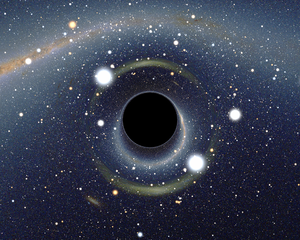In a laboratory in Scotland, a revolutionary kind of laser is taking shape – the first one to be made out of an artificial black hole.
Once complete, the device could help confirm mounting evidence that real black holes, despite their name, emit light. A black-hole laser could also find practical uses in devices that probe a material's properties without damaging it.
At the heart of such a laser is a phenomenon that Stephen Hawking predicted in the 1970s, and that physicists have been hunting ever since. Although not even light can escape their gravity, Hawking calculated that black holes should nonetheless emit a faint glow, now called Hawking radiation.
This is a consequence of quantum theory, which says that a vacuum is not truly empty, but fizzes with fleeting pairs of particles and their antimatter counterparts. Normally, these pairs rapidly annihilate and disappear again, but if a pair of photons pops out too close to a black hole, one falls in – and the other escapes.
Artificial event horizon
The resulting glow around naturally occurring black holes, such as the one at the centre of our galaxy, would be too dim to see. So to confirm Hawking's theory, physicists have taken to building artificial analogues in the lab by mimicking the physics of a black hole's event horizon, the surface beyond which light cannot escape.
CLICK HERE to read this fascinating article.
.





0 comments to Hawking Radiation and the Quantum Theory
Post a Comment